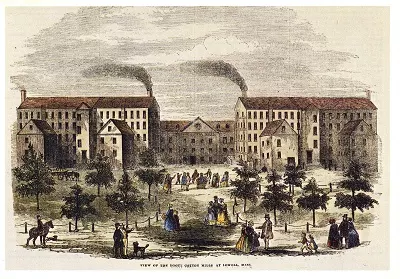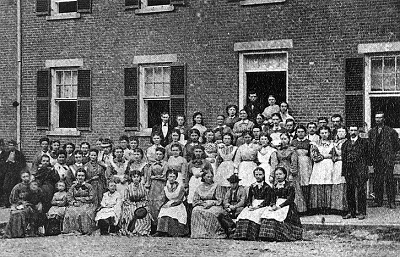In the later part of the 1700s, the textile industry started taking a prominent shape in England, and Americans also wanted the same. However, the rise of textile mills in America still had time, as the English law made it illegal to transfer loom technology anywhere else outside their country premises.
Samuel Slater did evade the law and migrated to America in 1789, memorizing the handloom design. By 1790 America witnessed its first set of textile mills established by Moses Brown and Samuel Slater. Soon after this incident, Eli Whitney developed the cotton gin – a tool that could fast forward the sorting of cotton seed from the cotton fiber.
The Rise Of Textile Mills In America Among The War Situations
Francis Cabot Lowell, an American merchant, was the first to discover a textile factory in the USA. Also, he established the Boston Manufacturing Company (1813) with multiple partners. Then as time passed by, it was the time of the Civil War, where cotton became a prominent bargaining chip.

Later on, during World War 1, there was an increase in demand for American-produced textile goods. The prominent items were military uniforms and blankets. Among all, the textile industry in North Carolina expanded in particular. By 1923, it had crossed Massachusetts as the leading textile producer in the United States.
The Social Life And Mill Villages In America
Amid the rise of textile mills in America, the country witnessed new patterns of everyday life in the mill villages. Because the early mills were located in the countryside near water streams, the company management had to provide their workers with adequate housing close to the mill premises.
The villages were more than a simple living spaces for the employers. It is where the men and women working in the mills fell in love, married, reared their children, and worked together to build a better life. Also, the mill villages posed as the best option for the management to control the regular whereabouts of the employees residing within the premises.
According to a 1910 report by the USA’s Bureau of Labor – the management was regulating the daily living conditions of the mill workers. The company owned everything and exerted full rights.
Housing Condition In The Mill Villages
Moving on to the housing conditions of the mill villages. Kerosene lamps were lighting up the households. Usually, the houses were small. A family of seven had a four-room cottage allotted to them, with little privacy. The families had wells or hydrants for water, which they shared with the neighbors. Also, rather than indoor plumbing, the houses had outdoor toilets.
As per the chronicle of Bessie Buchanan – she lived and grew up in a family of eight brothers and sisters. She wrote – the boys and girls had separate rooms while the parents had one allotted to them. The house never had a living room.
Society In The Mill Villages
As an after-effect of the rise of textile mills in America, these villages paved the way for social bonds and communal harmony. The villagers living as neighbors helped each other without expecting to get paid. Only they had the assurance that those neighbors would be helping them in return.
Also, the villagers were bound by the community values and depended on folk medicine and home remedies to treat ailments. Community healers would nurse the sick and deliver newborns.
There were female healers – also the most respected women in the village. Among men, musicians had the highest place in terms of social respect. Village bands often performed on Saturdays, – for community celebrations and house dances.
Mill Girls of Lowell
As discussed, Francis Cabot Lowell established the first textile factory in the USA. However, the most interesting factor was that single girls could work in the Lowell factory and earn financial independence. With time, these girls came to be known as the Lowell girls.

Aged between 15 to 30 years, these ‘female operatives’ went through long hours at the mill and grueling working conditions. They all focused on saving more money and gaining the right economic independence.
Typically, the mill girls were employed for approx 9 to 10 months of the year and left factories during Summer to visit back home.
With time, American textile production has changed much, emerging as the best in the field. But there is a long list of past events introducing the workforce to several changes, especially women.



